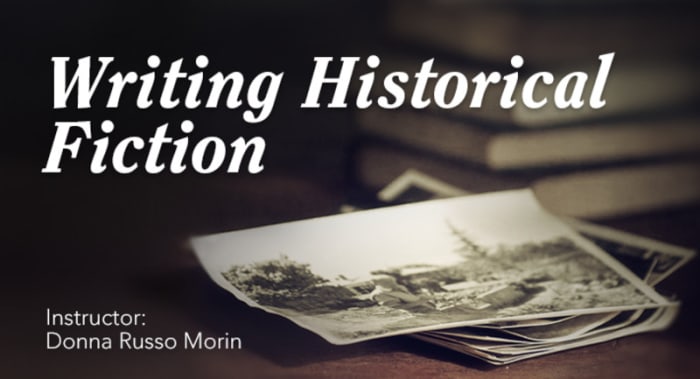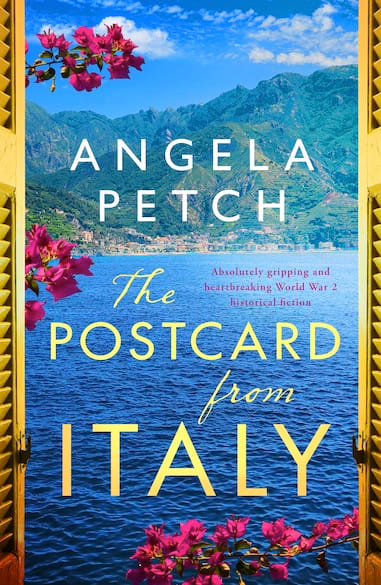Entertaining With the Past: How To Write Engaging Historical Fiction
You’ve had your light bulb moment and found a riveting story idea set in the past. Maybe it was inspired by an obituary in the newspaper; you have a family story you are burning to share; you’ve read a poem that ignited your emotions; or you believe there is a gap in an account of a famous period in history that has been neglected and you want to embellish an idea or theory you hold dearly. We can’t always know what is true. There are always alternatives to accounts, different perspectives to share … so let your imagination fly.
(How to Maintain Accuracy Across Multiple Plot Lines in Historical Fiction)
Where to start?
Writing a history book is one thing. Fiction is another. Perhaps unkindly, I shall start with looking at some poor reviews of historical fiction.
“The story was interesting, but disappointing. It did not thrill.”
It would be devastating to receive a review like this. From the very beginning, in whatever genre you write, you need to have an idea of your story arc. Simply put, your beginning, middle, and end, with conflicts and tensions thrown in along the way.
Everybody writes with different methods. Some authors know from the outset where they are going and how they are getting there. Others write from the seat of their pants. I am somewhere between these two methods.
However you tell your story, have the readers sitting right beside you all the time. Are they still with you at every stage? Are they yawning? Excited? Crying? Screaming at you that a certain event could never have happened? Have at the forefront of your mind that you are writing a series of scenes that tell your story from a period in history. And put very bluntly, ask yourself if your story is really worth telling?
Ask yourself questions all the time as you write. But enjoy the process. If you are moved or angered when you write a scene, then your readers will probably be too.
“The author was too clever. It felt like a history lecture, I couldn’t follow the story.”
Remember that you are writing a story to entertain your reader. The story is paramount, the history is important, but it should not warp or dominate the narrative. If you are placing your fictional characters into real events, then you have undoubtedly done your research, but you should only show about 10% of this. You are not writing a document. Think to yourself that you are massaging the truth to create the best story possible.
Make sure that you tabulate, in whatever way works best for you, your historical details as you write your story. So, important dates (battles, marriages, births, deaths, political decisions) are kept consistent. Note down the day, month, weather, the time too.
I usually take a year to write each of my novels and it’s impossible to remember everything as I go along. I use a spreadsheet with a summary of each chapter, the characters who appear in that chapter, the date, the main purpose of the chapter and a column marked “TO DO”—for lightbulb moments/reminders/comments from my editor. During edits, the information will change, but if you have recorded these details, they will be at your fingertips and hopefully you won’t get in a muddle. (Easily done.)
You can use different colors for the characters as you weave them into your timeline, to easily see the balance. And Post-It notes are also really useful. Invest in the best quality so that they don’t fall off and get hoovered up. (Actually… why are you doing housework when you could be writing?)
“I couldn’t connect with the characters.”
I listened to Sebastian Faulks recently on the radio discussing his latest book, Paris Echo, and one comment struck a chord: “… history isn’t a pageant that happened to somebody else…”
We need to make sure we animate our historical characters so that the reader connects with them; so that they feel as if they are beside them. Our characters should be memorable—ordinary but extraordinary. Identifiable. As writers, we need to really know them, understand what makes them tick; what presses their buttons. What do our heroes and heroines really, really want?
Use your imagination but set it firmly within the period your characters are living. At the same time, don’t weigh them down with too much detail. Don’t chase historical facts to their death. You are not delivering a history lesson.
I compile character sheets for my main characters, including seemingly minor details about their favorite color, outfit, food, their birth signs, pet hates, fears, best friend, enemies. When writing The Postcard from Italy, I sourced images of my characters (and places) and pinned them to the noticeboard at the side of my desk.
My historical character, Antonella, glowered at me when I wrote something inaccurate about her and smiled when I corrected this. Bizarre as it sounds, when walking along the sea to thrash out knotty plot problems, I often felt she was at my side, suggesting what she wanted to do next. Her story starts at the tail end of World War Two in southern Italy.
IndieBound | Bookshop | Amazon
[WD uses affiliate links.]
To be appropriate to the era involved lots of research. When writing historical fiction, a writer must understand what the rules of society were at that time. For example, how much freedom did a woman have in the era you are setting your book? What were the society rules? Of course, in romance, the heart is never under control and passion is a universal emotion, but don’t lose credibility by using a romantic pulse which is from the wrong century.
Dialogue is so important. I have written four novels set in the 1940s but there is no need to parody the clipped, old-fashioned newsreel speak so cleverly enacted by Armstrong and Miller in their Best of the RAF Pilot shows. (If you want a giggle, google them: The Armstrong and Miller Show | Best Of The RAF Pilots – YouTube.)
An occasional expression from the time is useful and be really careful never to slip in present-day slang. Your characters have to resonate with the readers whilst remaining true to their era and capture the past. My tip is to read the conversations aloud. Better still, ask a writing buddy to do it for you to hear if the dialogue flows and is appropriate (without being slavish) to the time.
Finally, have fun with your writing. Understand the guidelines but animate your words. Climb onto your magic writing carpet and transport yourself and your readers to another time and place. And don’t fall off.

Join Donna Russo Morin to learn the definition of historical markers and how and where to unearth them. And uncover the tools to integrate history, research, and the fiction plot arc. Most of all, find out how to honor verisimilitude—the goal of any historical writing—and avoid the dreaded anachronism.



